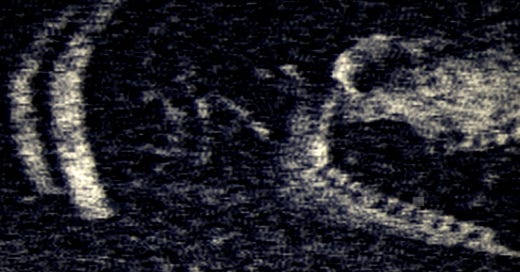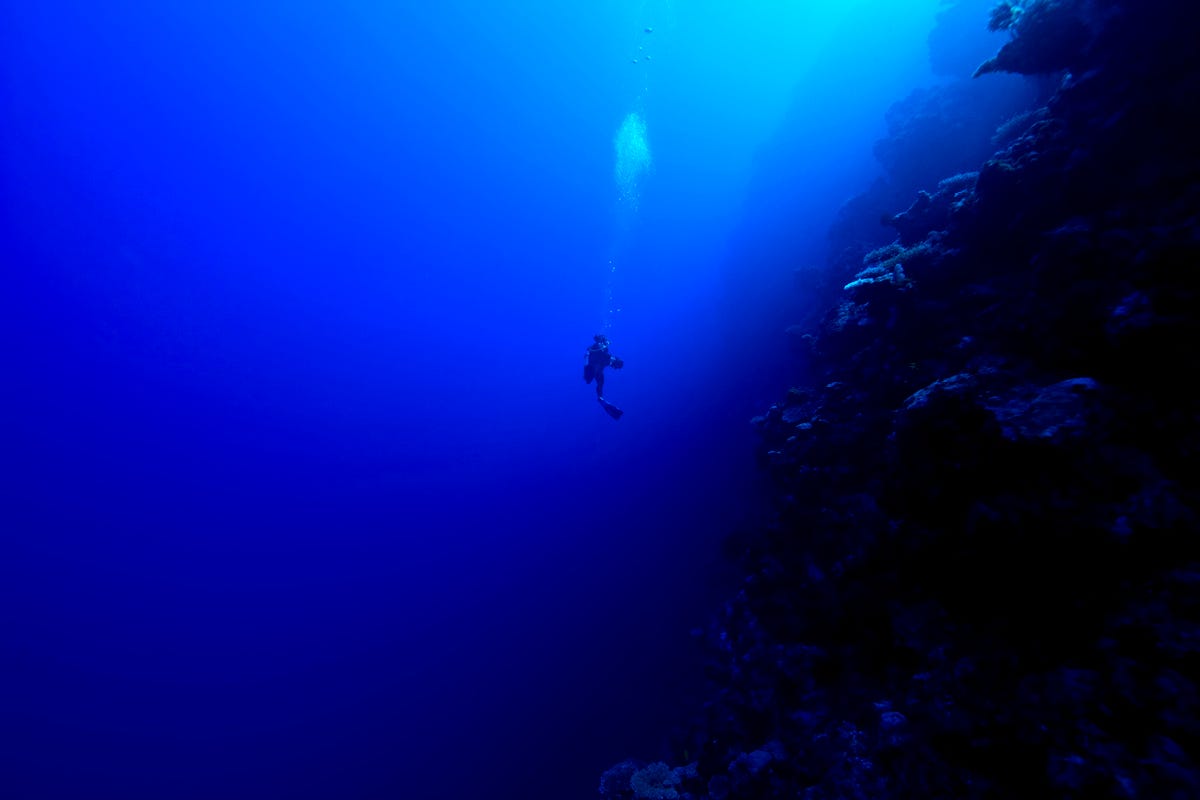Thalassophobia (Fear of Deep Water) in Horror Game 'Iron Lung'
Game Recommendation
Spoiler free!
Trapped in a Blood Ocean
It’s such a simple game mechanic, but it’s chillingly effective. Never has pressing a space bar filled me with such anxiety.
David Szymanski’s 2022 game Iron Lung takes place entirely inside a submarine at the bottom of the ‘blood ocean’ of an alien planet. You realise very quickly that you are totally expendable, you’re Laika in the space craft: no one expects you to survive.
You’ve been tasked with taking photographs at certain points around the ocean floor and must navigate near-blindly. The single window of the craft is perpetually pitch black to the naked eye. There is no light down here.
The only way to see what’s inches away from you on the other side of that window is to take grainy greyscale photographs that appear on a computer screen. This is sci-fi at its most low-tech, clunky and clumsy and not a million miles away from the apparatus actually used by the first explorers of the deep sea, as I discussed last week.
Sometimes the grainy pictures that appear after a pregnant pause are totally banal, there are shots of the ocean floor or the maze of rocky walls. Sometimes eerie objects are glimpsed, seemingly manmade edifices or unidentifiable bones. Occasionally, horribly, you realise that you have been standing so so close to something far more dangerous.
Sharing Horror
One of life’s great disappointments is the feeling you get when you show someone a piece of media that has frightened you and watch their eyes glaze over while they shrug and say ‘I guess it’s kind of creepy.’
The fizzing electricity of a primal yet subjective fear is something we can’t hope to share with everyone, not at the same time.
Whenever I listen to Mark Kermode reviewing a film in which someone is trapped in a tight space, I know that his claustrophobia will have sparked a special frisson in him that I won’t feel even if I can appreciate the storytelling.
The effect that Iron Lung has on me is undeniably a result of my extreme ‘thalassapohobia,’ the fear of deep, dark water. If you don’t share this fear, the game might still be fun but could easily fall flat.
Fear of the Deep
Seán J Harrington explores the Lacanian and Freudian symbolism of deep water in his chapter ‘The Depths of our Experience: Thalassophobia and the Oceanic Horror’ (from Beasts of the Deep: Sea Creatures and Popular Culture).
For such thinkers, dark water becomes symbolic for fear of boundaries between the knowable and unknowable, representative of the unplumbed trenches of the psyche.
But isn’t the ocean floor innately frightening in a literal sense too, considering how easily the sea can take our lives and how many sharp teeth really are waiting down there to devour our remains? Is fear of this alien world even really a phobia, is it irrational to dread a place so utterly hostile to human life?
However we interpret it, thalassophobia has inspired many horror stories on both page and screen. Lovecraft, in particular, seems to have been compelled by it since so many of his gods and monsters lurk beneath the waves.
Lovecraft often refrains from describing these beings in any detail, leaving gaps for our imagination to fill and Harrington writes that “into these carefully crafted aesthetic gaps we project our own archaic horror.”
This, he notes, is why Lovecraft so often suffers in adaptions into visual media “where previously ‘indescribable’ elements of his stories are continually realised and exhibited – through kitsch practical effects… and unsuccessful, dis-enchanting CGI.”
This is what makes Iron Lung so special to me. Its black window is precisely the kind of ‘carefully crafted aesthetic gap’ that we find in Lovecraft. The moment between pressing the space bar to take a photo and waiting for it to develop was filled (at least for me) with the worst projections of archaic horror and when the camera captured something threatening, it was still so blurred, so out of focus, or so small a part of a much greater mystery, that I was even more afraid to adjust my position, to aim the camera of the submarine anew and see what would appear this time.
So if you have an hour or two to spare and have a fear of deep dark water like me, submerge yourself in Iron Lung and let me know in the comments if you felt that archaic horror too.
Subscribe for more articles on a range of fascinating subjects. I publish my ‘horror moments’ on Thursday mornings, and bonus content like this on Monday afternoons.









Holy shit. This is so weird and you might not even believe it, but I woke up from a dream very similar to this. Literally, I was trapped in a submarine that was being attacked by monsters (aliens). Many of the crew had perished, we were being hunted. It was a nightmare. I woke up thinking, "This would make a good video game or movie," then I checked my notifications on this app and saw you followed me. So then I stumbled on this.
So weird...
Iron Lung is a masterclass in minimalist horror. Its chillingly effective use of grainy, delayed photos taps into my deep-rooted thalassophobia. The Lovecraftian approach, leaving much to the imagination, made the experience even more terrifying—such great writing.